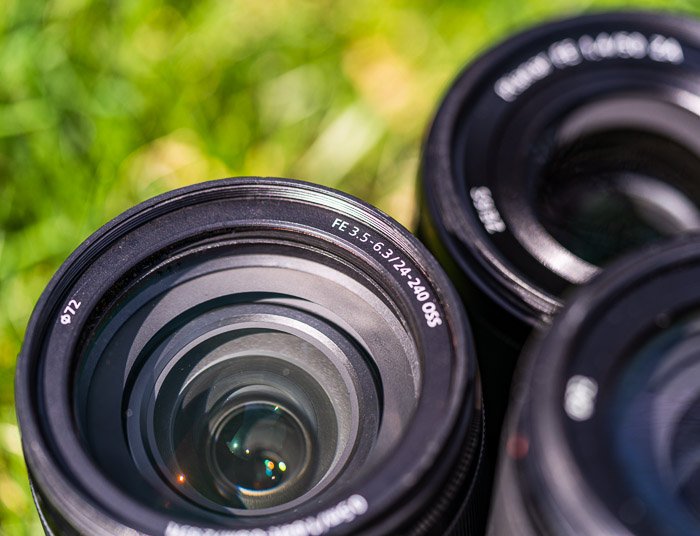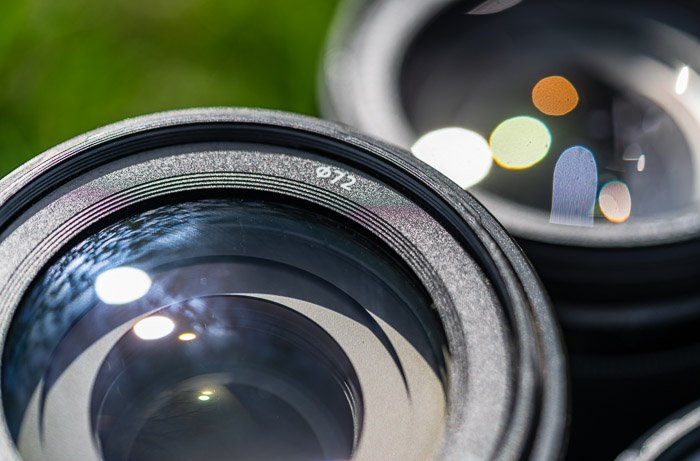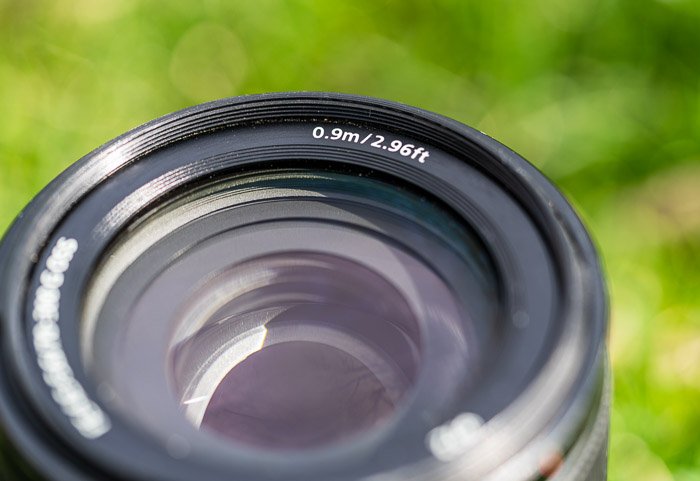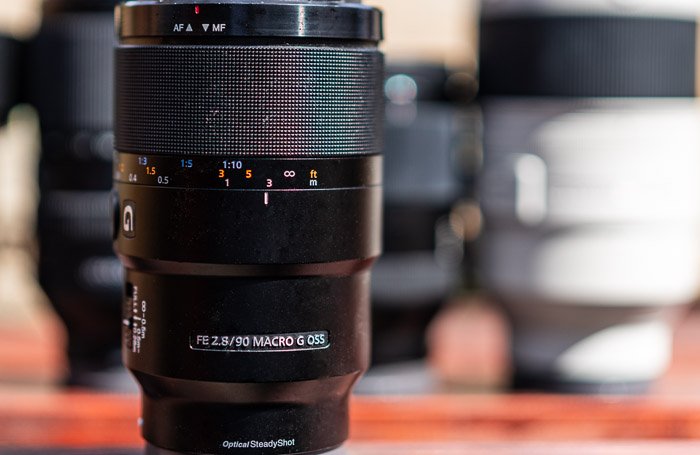This article covers what the numbers on your camera lens mean. It may seem not very easy. But you can learn to decode the manufacturers’ shorthand with a few hints. So let us look at the most common letters and numbers on camera lenses. [ExpertPhotography is supported by readers. Product links on ExpertPhotography are referral links. If you use one of these and buy something, we make a little bit of money. Need more info? See how it all works here.]
What Do the Numbers and Letters on Lenses Mean?
Let’s go over the main numbers and letters on lenses.
F Numbers Represent Aperture
F stands for f-stop or the speed of your lens. This is the widest aperture of the lens. Your lens may or may not have the “F” on it. You may see a number, a slash, and another number (# / #). The first number is the f-stop. Some manufacturers express the f-stop as a ratio ((1: ##). A lens reading 1.8 / 55 (or 1:1.8) means that the lens’s maximum aperture is f/1.8. Lenses with wider apertures let in more light and are generally more expensive. On telephoto lenses, there may be a range of numbers on either side of the slash (## – ## / ## – ## or 1: ## – ##). A lens reading of f/4.0-5.6 means that as the lens zooms, the aperture narrows. The maximum aperture is f/4.0. But when fully zoomed in, the aperture narrows to f/5.6. The zoom lenses that do not change the aperture as they zoom are more expensive. There may be other letters with the “F” on some lenses. These letters are often used to separate similar lenses with different features within the same system. For instance, “FE” for Sony identifies the lens as a full frame, E-mount. “FD” is an older version of Canon lenses replaced by an electronic “EF” mount.
Numbers with Millimeters (mm) are the Focal Length
The focal length of your lens is in millimeters (mm) on the lens. Your camera lens may or may not have “mm” on it. You see a number, a slash, and another number (# / #). The second number is the focal length. A lens stamped 1.8 / 55 means that the focal length is a fixed 55mm lens. Prime lenses have only one focal length. But zoom lenses have a range of focal lengths. Smaller numbers are wide-angle lenses. And the larger the number, the more zoomed-in you can get. A reading of 18-55mm is a focal length range. It means that you can change your focal length. The widest angle is 18mm. And you can zoom in to 55mm. Standard zoom lenses are 16-35mm, 24-70mm, and 70-200mm. But zoom ranges vary by manufacturer.
Numbers with Ø are Lens Diameter
The symbol that looks like a circle with a line through it (Ø) means diameter. This is the measurement, in millimeters, around the outside circle of your lens. So Ø72 means your lens is 72 millimeters in diameter. You need to know the size of your camera lens if you are buying a filter or a lens cap.
Numbers in Meters and Feet are Focusing Distance
Your lens may have a number in meters and feet (#m / #ft). This is the minimum focusing distance for the lens. This number matters mainly for photographers who like to get close to their subjects. A camera lens that shows 0.9m / 2.96ft focuses at 0.9 meters or 2.96 feet. The numbers are equal. But they are expressed in two different measurement systems. If you move the lens closer than 0.9 meters to the subject, the camera cannot find focus. On a zoom lens, the focusing distance may be a range of numbers. A lens reading 0.5m / 1.64ft-0.8m / 2.63ft means that as the lens zooms, the focusing distance lengthens. At the widest focal length, the focusing distance is 0.5 meters. But when zoomed in, the focusing distance is 0.8 meters.
What Does Macro and the Magnification Ratio Mean?
Macro lenses can take photos of small things or photograph very fine details. A 1:1 magnification means that the real-life image is the same size as it is on the sensor. If the ratio is 2:1, then the lens makes the subject twice the size of the sensor. If the ratio is 1:2, the subject is half the size of the sensor. You may have the option to change the ratio on your lens.
Other Letters and Features on Lenses
Camera manufacturers often stamp other letters onto their lenses. These show special features of the lens. These letter combinations are unique to the manufacturer. Here are a few ways different lens makers abbreviate lens specifications.
Sony Lens Abbreviations: “G” stands for “Gold,” or the highest-quality version of the lens. And “OSS” identifies the lens as having optical stabilization. Canon Lens Abbreviations: “USM” stands for “Ultrasonic Motor.” This assists the focusing system. Nikon Lens Abbreviations: “AF-S” in the Nikon system also means a motor inside the lens. “ED” refers to the type of glass used on Nikon lenses.
The manufacturer also tells you if this is a second lens version. Usually, this is expressed with the Roman numeral II. These lenses are usually an improved version of an older lens. There are all sorts of letters that lens manufacturers use. In general, lenses with special features will cost more. Be very careful to look at all letters when buying a lens. Some letters identify different mounts within the same system. Canon uses “RF” to refer to their new mirrorless lenses. These do not mount on Canon cameras with mirrors.
Camera Lens Buttons and Dials
Many lenses have buttons and dials that include numbers and letter abbreviations. On a zoom lens, you have a ring that changes the focal length. Sometimes you also have an aperture dial on the lens. Twist the dial to change the aperture. Some lenses let you turn image stabilization on and off. Landscape photographers often turn this off when mounting a camera on a tripod. You may also alter the focusing distance or toggle between auto and manual focus on the lens. It is important to know what all the letters and numbers of your camera lens mean!
Conclusion
Each lens manufacturer has a unique way of labeling lens features. But you can expect to see the maximum aperture (f-stop) and focal length labeled on the lens. You may also see other lens features, including the lens mount. When buying a new lens, look carefully at the numbers and letters on lenses. Each holds valuable information. One letter (or lack of a letter) may change the lens’s value by hundreds of dollars!







